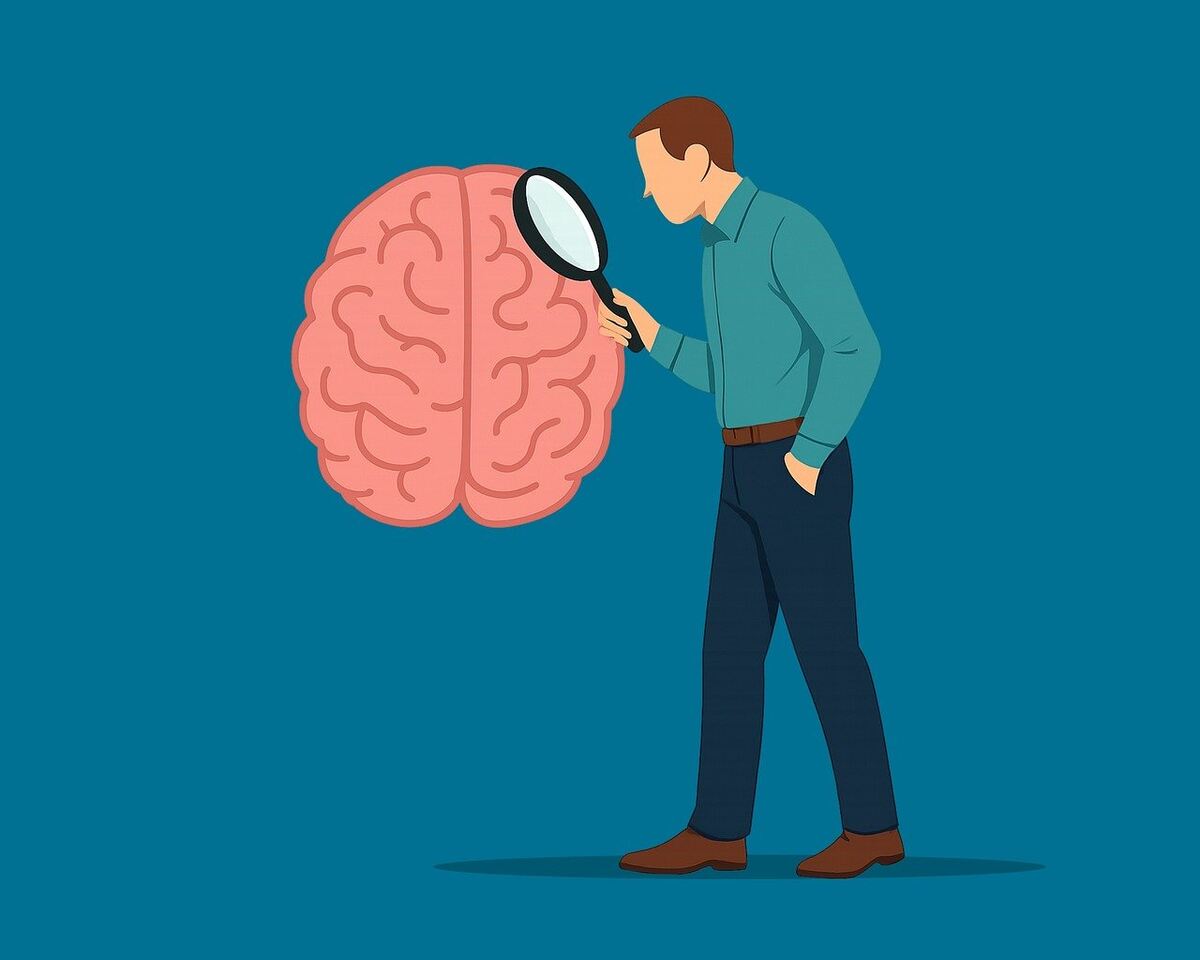Summary:
Self-hypnosis often feels like ordinary relaxation, leading many to doubt their trance state due to unrealistic expectations shaped by Hollywood. Genuine hypnosis involves a relaxed, aware state with subtle subconscious engagement, unlike the dramatic portrayals seen in media. Techniques like finger levitation can provide tangible proof of hypnosis by demonstrating subconscious responsiveness, helping build confidence in one's hypnotic abilities.
You're sitting there with your eyes closed, focusing on your breathing, repeating your suggestions... but you're thinking, "Am I even hypnotized? This just feels like I'm relaxing with my eyes closed. Shouldn't I feel more... different?"
If you've ever questioned whether you're actually in a real trance during self-hypnosis, you're not alone. This is the #1 doubt that stops people from progressing in their hypnosis practice. The problem isn't that you're failing—it's that you're expecting Hollywood hypnosis instead of recognizing the real thing.
Most people think hypnosis should feel like being unconscious or completely "out of it." The truth is, a genuine trance state often feels surprisingly normal. You're aware, you're thinking, and you might even be analyzing the experience. That's not a sign you're doing it wrong—that's exactly what real hypnosis feels like.
The Hollywood Hypnosis Myth
Movies and stage shows have created a completely false image of what hypnosis looks like. They show people going limp, becoming zombie-like, or losing all awareness. This theatrical version might make for good entertainment, but it has nothing to do with the therapeutic, transformative trance states you're actually seeking.
Real Trance vs. Hollywood Trance:
Hollywood Version:
- Complete unconsciousness
- Zombie-like compliance
- No memory of the experience
- Dramatic, obvious changes in behavior
- Instant, magical transformation
Real Trance:
- Relaxed but aware state
- Focused attention with some mind wandering
- Full memory of the experience
- Subtle but powerful subconscious processing
- Gradual, integrated change over time
The reason people doubt their trance is because they're comparing their genuine experience to fictional portrayals. It's like wondering if you're really in love because it doesn't feel like a romantic movie.
Signs of Hypnosis: What to Actually Look For
Deep trance isn't about losing consciousness—it's about shifting your state of awareness. Here are the real signs that you're successfully entering a hypnotic state:
Physical Signs:
- Your body feels heavier or lighter than usual
- You notice changes in your breathing pattern
- Your limbs feel relaxed or "disconnected"
- You might feel warmth or tingling sensations
- Your eyelids feel heavy or fluttery
- You lose track of your physical position
Mental Signs:
- Time seems to pass differently (faster or slower)
- Your thoughts feel more distant or dreamlike
- You experience vivid mental imagery
- Your internal dialogue becomes quieter
- You feel a pleasant, floating sensation
- You're aware but not concerned about outside sounds
Emotional Signs:
- You feel deeply calm and peaceful
- Emotions feel more fluid and changeable
- You experience a sense of detachment from worries
- You feel more open to positive suggestions
- There's a quality of inner stillness or spaciousness
The key insight is that hypnosis is a natural state you've experienced countless times—when you're absorbed in a good book, driving on autopilot, or just before falling asleep. You're not trying to achieve something foreign; you're learning to access a familiar state intentionally.
The Ultimate Trance Test: Finger Levitation
If you want definitive proof that you're in a real trance, try this simple but powerful convincer. Finger levitation is a classic hypnotic phenomenon that demonstrates your subconscious mind's ability to create automatic physical responses.
Why This Test Works: Finger levitation proves that your subconscious mind is engaged and responsive. When it works, you'll feel your finger rising by itself, without conscious effort. This creates an undeniable "aha!" moment that shatters any doubt about your hypnotic abilities.
The Step-by-Step Finger Levitation Test:
Step 1: Enter Your Trance State Use your usual method to relax deeply. Close your eyes, breathe slowly, and allow your body to settle into that familiar state of calm focus. Don't worry about whether you're "deep enough"—any level of relaxation will work.
Step 2: Position Your Hand Rest your right hand comfortably on your thigh or chair arm. Let your hand be completely relaxed, with your fingers resting naturally. Focus specifically on your index finger. Notice the weight of your finger against the surface.
Step 3: Begin the Suggestion In a calm, gentle internal voice, begin to suggest to yourself: "My index finger is beginning to feel lighter... as if it's starting to float... like there's a tiny balloon tied to my fingertip, gently pulling upward..."
Step 4: Create the Sensation Continue with imagery that feels natural to you: "I can feel that lightness spreading through my finger... my finger wants to rise... it's becoming lighter and lighter... like a feather floating on air..."
Step 5: Allow, Don't Force This is crucial—don't try to lift your finger consciously. Simply maintain the suggestion and allow your subconscious to respond. You might feel tingling, lightness, or small twitching movements. These are all signs that your subconscious is engaging.
Step 6: Follow the Movement If your finger begins to rise (even slightly), continue the suggestion: "That's right... rising higher... floating effortlessly... my subconscious mind is in complete control..."
Step 7: Complete the Test Whether your finger rises dramatically or just twitches slightly, you've succeeded. Even micro-movements prove your subconscious is responsive. To end, simply suggest: "And now my finger can return to its resting position, feeling completely normal and relaxed."
What to Expect (And What It Means)
Full Levitation (20-30% of people): Your finger rises smoothly and dramatically, feeling like it's moving by itself. This is a clear sign you're in a responsive trance state and have strong subconscious engagement.
Partial Movement (40-50% of people): Your finger lifts slightly, twitches, or you feel strong sensations of lightness without dramatic movement. This still indicates successful hypnosis—your subconscious is responding even if the physical movement is subtle.
Strong Sensations Only (20-30% of people): You feel distinct changes in your finger (tingling, lightness, warmth) without visible movement. This is still success! Your subconscious is processing the suggestions; you might just need more practice for physical manifestation.
No Obvious Response (10-20% of people): Don't panic if nothing seems to happen the first time. This doesn't mean you're not in trance—it might mean you need different imagery, more relaxation time, or a different type of convincer.
Troubleshooting Your Trance Test
If your finger doesn't move:
- Try different imagery (helium balloon, magnetic pull, puppet strings)
- Spend more time in relaxation before attempting
- Use a different finger instead
- Try the test at different times of day
If you feel like you're "making it happen:"
- That's normal! There's always some conscious involvement
- The key is whether it feels automatic or effortful
- Even if you're "helping," your subconscious is still engaged
If you're too analytical:
- Acknowledge your thoughts without fighting them
- Remember that awareness doesn't negate trance
- Try the test when you're more tired or relaxed
Beyond Finger Levitation: Other Simple Convincers
Once you've experienced finger levitation, you can try other hypnotic convincers:
Arm Levitation: Rest your entire hand on your thigh and suggest that your whole arm is becoming lighter and wants to float upward.
Eyelid Catalepsy: While in trance, suggest that your eyelids are glued shut. When you try to open them, they should feel heavy or stuck (always include a release suggestion).
Temperature Changes: Suggest that one hand is getting warmer while the other gets cooler. Many people can create noticeable temperature differences.
The Real Purpose of Hypnosis Doubts
Your doubts about whether you're "doing it right" actually serve an important purpose—they're your mind's way of ensuring you're having a genuine experience rather than just going through the motions. The fact that you're questioning yourself shows you're engaged and paying attention.
However, once you've experienced a convincer like arm levitation, these doubts typically dissolve. You have tangible proof that your subconscious mind is listening and responding. This creates a foundation of confidence that makes all future hypnosis sessions more effective.
Building Your Trance Confidence
Remember, hypnosis is a skill that improves with practice. Your first finger levitation might be subtle, but as you continue practicing, the responses often become stronger and more automatic. Each success builds your confidence and deepens your ability to access trance states.
The goal isn't to achieve movie-style unconsciousness—it's to develop a reliable ability to access the focused, receptive state where real change happens. When you can confidently enter trance and know you're there, you can use that state for any goal: stress relief, confidence building, habit change, or peak performance.
Your Trance Is Real
The next time you practice self-hypnosis, remember that the quiet, aware, somewhat ordinary feeling you're experiencing is exactly what real trance feels like. You don't need to feel dramatically different—you just need to feel receptive and focused.
Try the finger levitation test not because you need to prove anything, but because it's a fun way to experience the power of your own subconscious mind. When your finger rises by itself, you'll have undeniable proof that you're not just relaxing—you're creating a genuine hypnotic state.
Your subconscious mind is far more capable than you might think. The finger levitation test is just the beginning of discovering what you can accomplish when you learn to work with your mind rather than against it.
Did your finger float? That's just the beginning. Imagine what else you're capable of. Sign up for our newsletter to learn two more powerful convincers.



